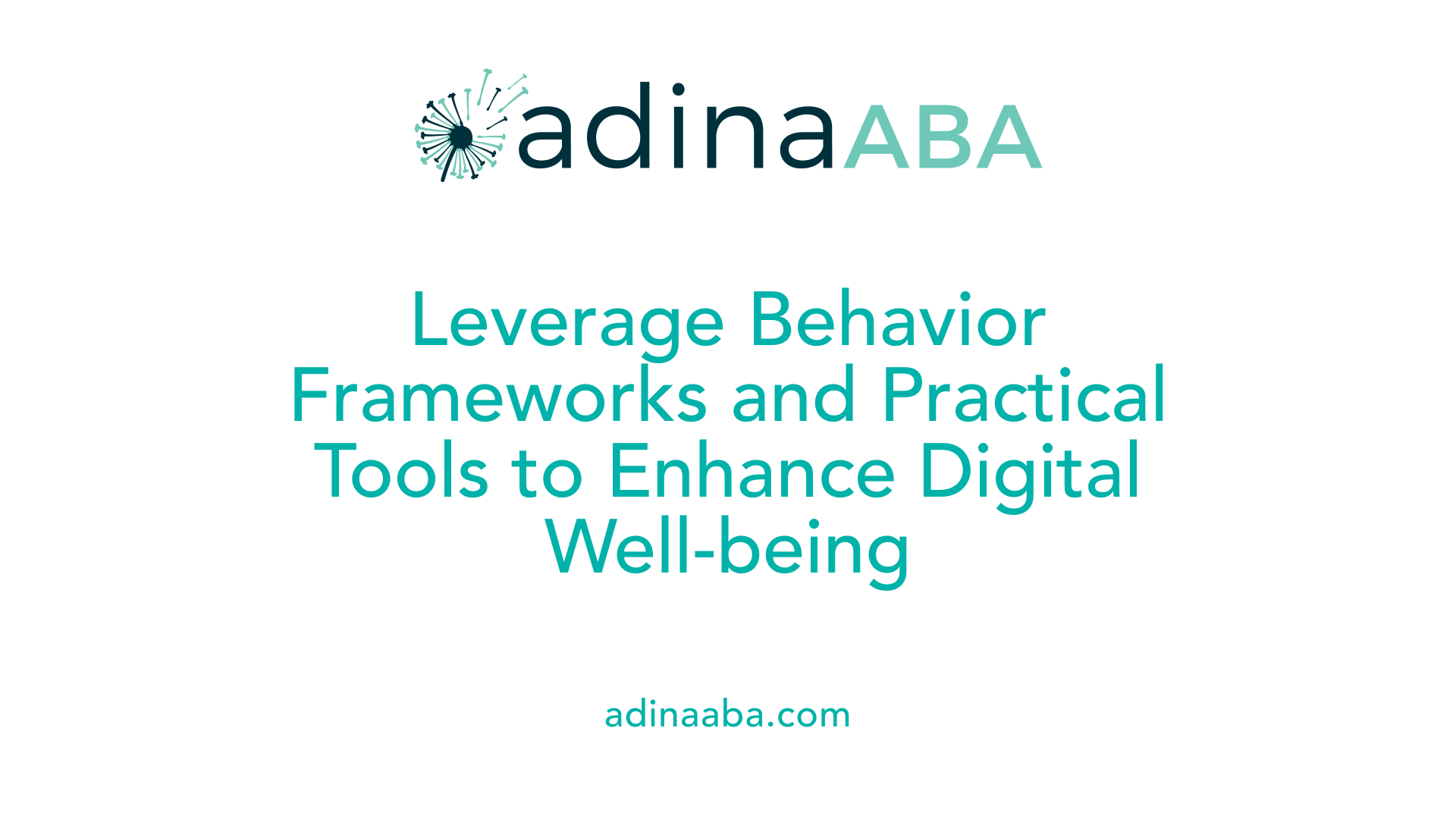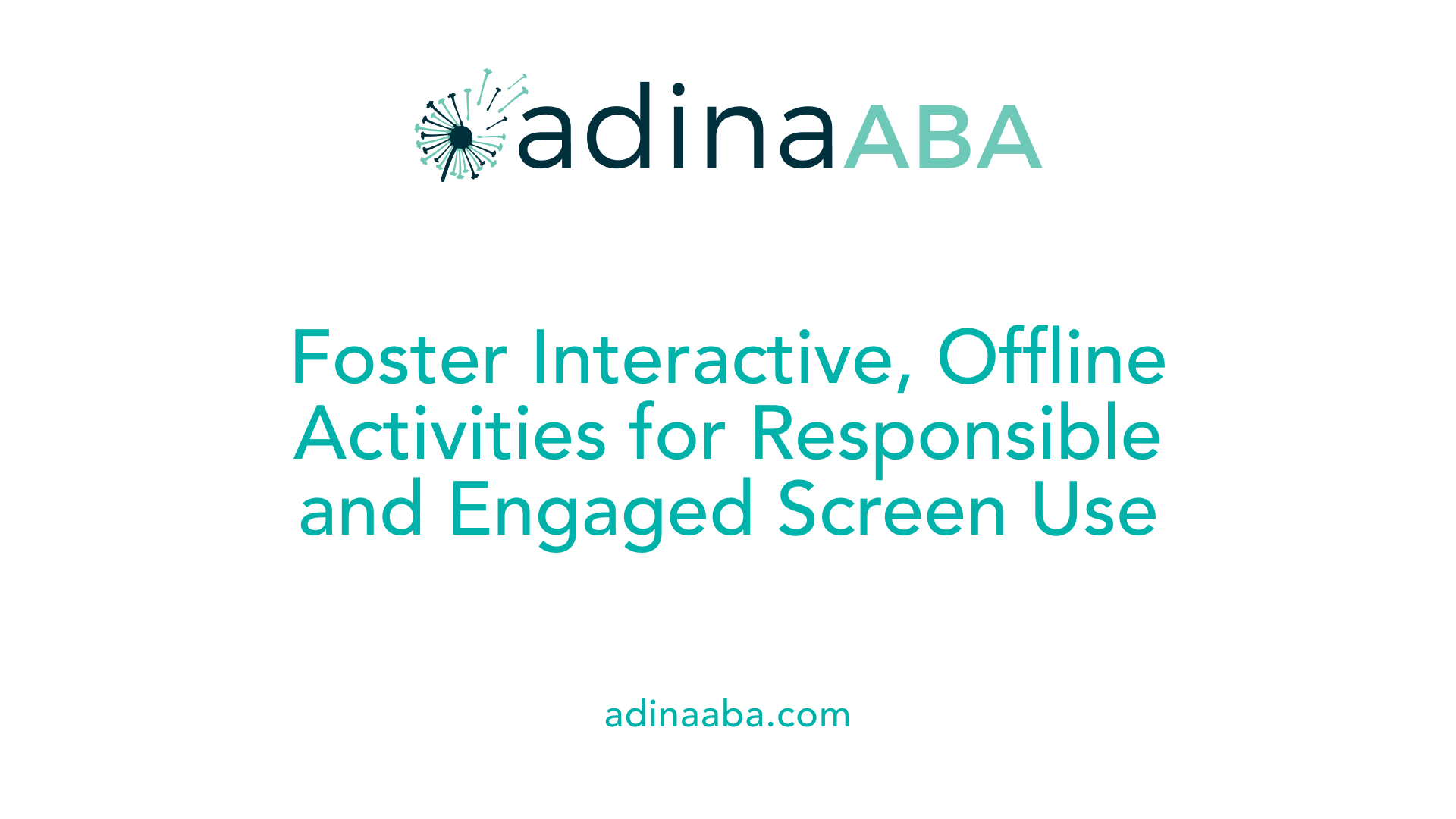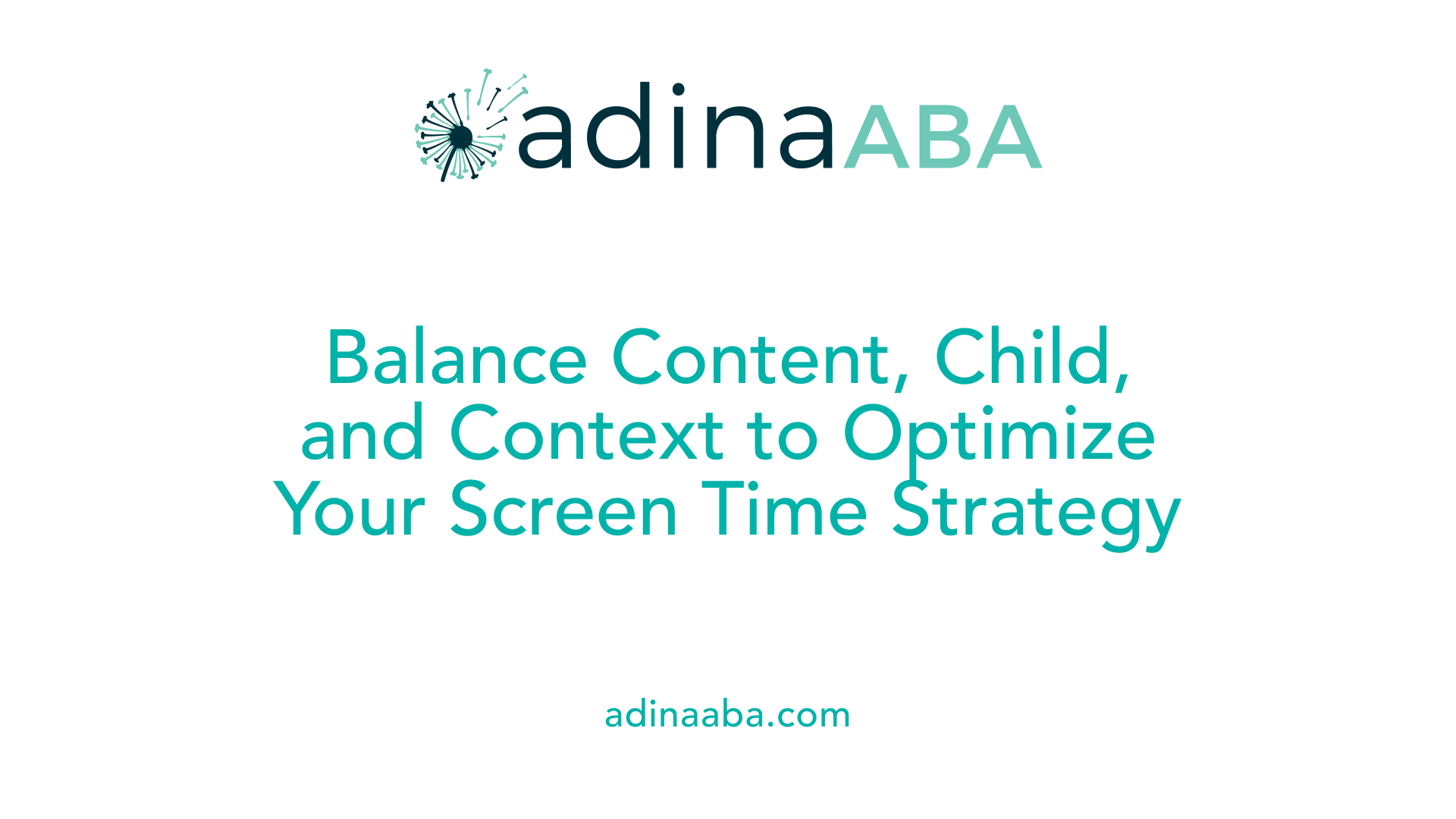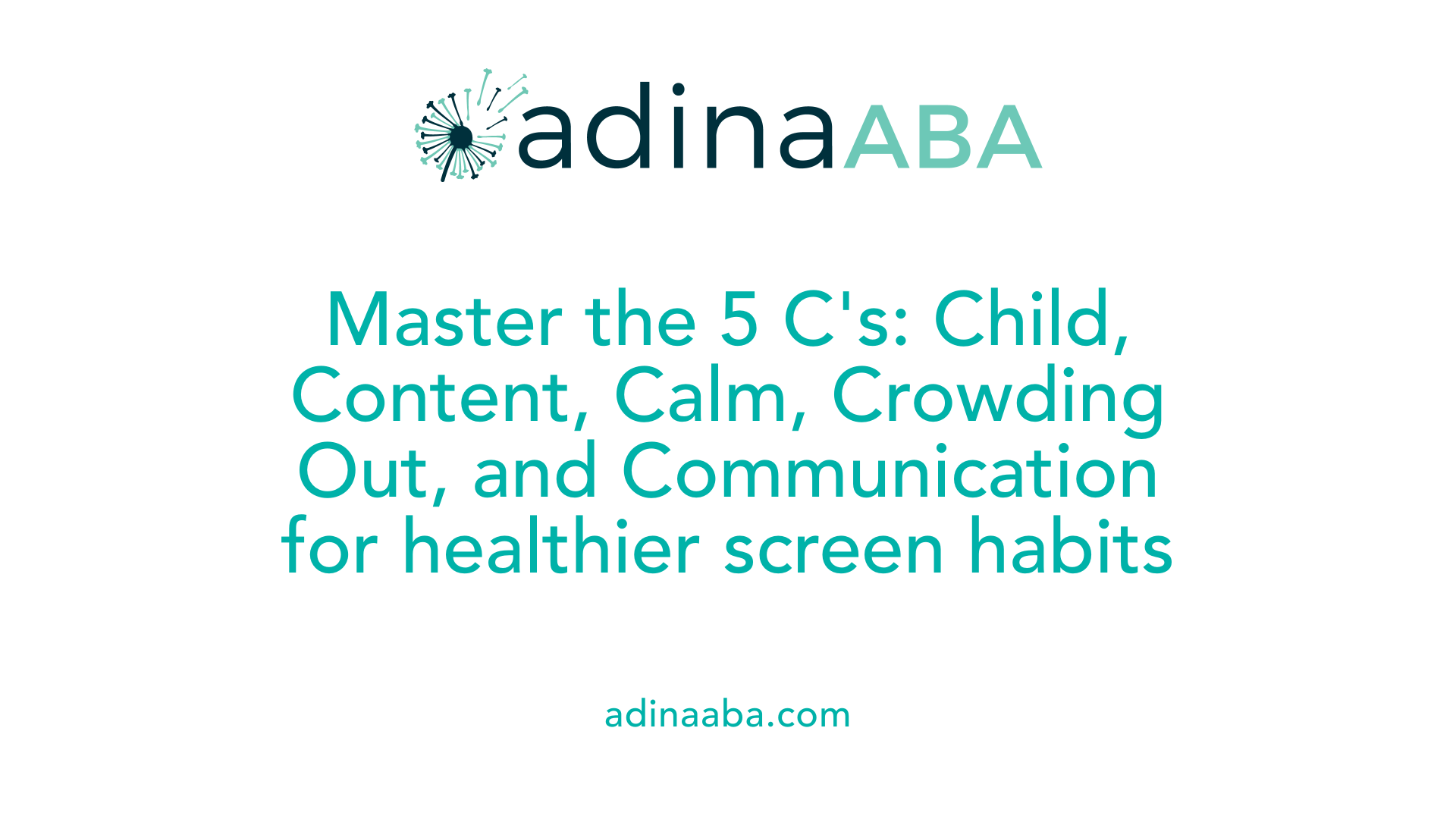Building healthy screen habits using behavior strategies

Understanding the Foundations of Healthy Screen Behaviors
Building healthy screen habits in children and adolescents is crucial for fostering their overall development, mental health, and well-being. Using behavior strategies rooted in research and supported by practical tools can help parents, educators, and caregivers guide responsible digital use. This article explores evidence-based approaches, behavioral techniques, and community initiatives designed to promote balanced media consumption and digital well-being.
The Role of Behavior Frameworks and Practical Tools in Promoting Digital Well-being

How does the behavior framework EMPOWER help in promoting healthy screen habits?
The EMPOWER framework is a structured approach used by platforms to foster better digital habits. It involves engaging users, motivating them, providing practical examples, operationalizing goals, working on behaviors, evaluating progress, and reinforcing positive habits. This model helps individuals develop self-awareness about their screen use and supports sustained behavior change by making healthy choices more accessible and rewarding.
What are some effective tools and apps for tracking and limiting device use?
Digital well-being apps like Apple’s 'Screen Time' and Google's 'Digital Well Being' enable users to monitor their device usage. These apps provide insights into how much time is spent on different apps and set limits for screen hours. Features such as enabling downtime, app limits, and notifications for overuse help promote mindful technology use. Regularly using these tools can aid individuals in establishing healthier digital routines.
How can setting and reinforcing habits improve digital health?
Creating routines like establishing tech-free zones—such as bedrooms or during family meals—and setting specific times for device use encourages balanced habits. Reinforcing these routines through constant communication, modeling good behavior, and involving children in the planning process helps develop responsibility. Over time, consistent reinforcement turns healthy habits into lasting patterns that reduce screen time and improve overall well-being.
What practical strategies support responsible media use for children?
Fostering responsible digital habits in children involves several practical steps:
- Acting as role models by limiting one’s own screen time
- Setting clear boundaries like dedicated screen-free zones and times
- Co-viewing content and discussing online content to build literacy
- Encouraging offline activities such as reading, sports, and hobbies
- Developing and reviewing personalized media plans based on age, personality, and developmental needs
- Monitoring online activity, teaching online safety, and maintaining open conversations about digital experiences
How do family and community initiatives reinforce healthy habits?
Group programs like 'NUGU' utilize social support and collaboratively set goals, making behavior change more effective. Events like the National Day of Unplugging encourage communities to disconnect periodically, fostering real-world connections and reducing stress. Family routines, shared offline activities, and community support all work together to promote sustained digital well-being.
| Approach | Description | Benefits |
|---|---|---|
| Use of Apps | Tracking and limiting screen time | Increased awareness and control |
| Setting Zones & Times | Establishing tech-free areas and schedules | Promotes balance and better sleep |
| Offline Activities | Encouraging reading, sports, hobbies | Reduces screen hours, supports well-being |
| Group Programs | Social support groups like NUGU | Enhanced motivation and accountability |
| Digital Detox Events | Periodic unplugging events | Reconnects with the physical world |
Creating Interactive and Engaging Environments for Responsible Screen Time

How can parents promote healthy media habits in children?
Parents play a vital role in shaping their children's media habits. One effective strategy is modeling balanced device use. When parents limit their own screen time, children learn by example. Instead of constant device engagement, parents can demonstrate responsible behaviors such as taking regular breaks and engaging in offline activities.
Encouraging alternative activities adds variety and reduces dependency on screens. Activities like outdoor play, reading, hobbies, and family games foster well-rounded development and positive social skills.
Establishing clear, consistent rules around media use helps children understand boundaries. For example, setting designated screen-free zones like bedrooms or during family meals can promote healthier habits.
Open communication about online content and safety is crucial. Parents should talk with children about what they watch, teach them about online privacy, and discuss how to behave responsibly in digital spaces. This dialogue enhances media literacy and encourages critical evaluation of content.
Staying informed about the latest media trends and technology tools allows parents to guide their children effectively. Using apps that monitor or limit usage, and setting intentional goals for screen time, can help foster responsible habits.
Ultimately, promoting healthy media habits involves a combination of modeling, setting limits, engaging in offline activities, and maintaining ongoing conversations about digital wellbeing.
The Principles of Content, Child, and Context in Screen Time Management

What are the 3 C's of screen time?
Managing children's screen time effectively involves focusing on three core principles known as the 3 C's: content, child, and context.
Content pertains to the quality of the media children consume. Experts recommend prioritizing high-quality, educational, and interactive programming that fosters learning and curiosity. It's important to avoid overstimulating or inappropriate material, like violent or fast-paced videos, which can affect attention and behavior.
Child emphasizes understanding and adapting to each child's age, developmental stage, and individual needs. Younger children benefit from co-viewing with parents, which allows for guidance, discussion, and making the experience more interactive. For older children, setting boundaries and encouraging self-regulation help promote responsible media use.
Context involves setting appropriate limits on screen time, establishing designated screen-free zones, and creating routines that foster healthy habits. This might include avoiding screens before bedtime, during family meals, or in bedrooms, to improve sleep quality and encourage offline interactions.
Balancing these three aspects—choosing suitable content, considering the child's developmental needs, and creating a supportive environment—helps maximize the benefits of screen time while minimizing potential risks like sleep disturbances, attention issues, and social withdrawal.
In practice, creating a family media plan that considers the child's age, setting consistent boundaries, and engaging in meaningful discussions about media content can foster healthier viewing habits and better overall well-being.
Implementing the 5 C's Framework for Informed Media Use

What are the 5 C's of screen time?
The 5 C's are a helpful guide for families and pediatricians to navigate children's media use thoughtfully. They stand for Child, Content, Calm, Crowding Out, and Communication. This framework, created by the American Academy of Pediatrics (AAP), is rooted in research about child development and the effects of screen time on mental health.
The goal of the 5 C's is to promote healthy, balanced digital habits. It emphasizes the importance of understanding each child's unique needs, selecting quality content, encouraging calm and mindful media interactions, preventing screens from crowding out essential activities like sleep, play, and face-to-face interactions, and maintaining open communication.
By applying these principles, parents can better supervise media use, teach children to self-regulate, and foster safe digital environments. The approach is proactive and ongoing, focusing on creating routines that support overall well-being.
Communication about media use
Open dialogue is vital. Parents should talk regularly with children about what they are watching and doing online. Asking questions like "How do you feel after you watch that?" or "What did you learn?" encourages reflection and critical thinking.
Explaining internet safety, respecting privacy, and recognizing online risks helps children develop digital literacy. It also creates a safe space where kids feel comfortable sharing concerns or challenges they encounter online.
These conversations should be developmentally appropriate and ongoing. For younger children, simple rules about content and screen time help set boundaries. For teens, discussions about digital citizenship and responsible behavior foster trust and self-awareness.
Encouraging balanced routines
Balancing screen time with offline activities enhances physical health and social skills. Parents can create structured routines that include designated tech-free zones like bedrooms and mealtimes.
Engaging children in activities such as sports, reading, arts, and outdoor play provides essential opportunities for creativity, social interaction, and physical activity. Family customs such as tech-free evenings or weekend outings reinforce these habits.
Modeling healthy behavior is also crucial. When adults limit their own device use and prioritize face-to-face communication, children learn by example.
Incorporating the 5 C's into daily routines helps cultivate mindful media consumption. This fosters not just safer screen habits, but also resilience and well-being in our increasingly digital world.
| Key Aspect | Strategy | Purpose |
|---|---|---|
| Child | Understand individual needs and behaviors | Tailor media use to age and personality |
| Content | Select high-quality, educational, and age-appropriate | Promote meaningful and safe engagement |
| Calm | Teach calming strategies and mindful use | Prevent overstimulation and anxiety |
| Crowding Out | Ensure screens do not replace vital activities | Maintain sleep, physical activity, and social bonds |
| Communication | Foster ongoing talks about digital experiences | Build trust, literacy, and responsible habits |
Research and practical experience show that applying the 5 C's helps promote a healthy media environment for children. By consciously integrating these principles, families can foster habits that support emotional, mental, and physical development in a digital age.
Fostering a Family-Centered Approach to Media Management and Digital Well-being

How can families create effective media use plans?
Creating a family media action plan involves setting clear rules and routines for screen time that align with children’s ages and developmental needs. Parents should develop personalized boundaries, such as limiting media use to one hour per day for preschoolers and ensuring screens do not interfere with sleep, physical activity, and family time.
In addition, establishing designated tech-free zones—like bedrooms, dining areas, and study spaces—helps promote healthier habits. Using tools like the American Academy of Pediatrics' family media use plan can guide families in setting realistic limits and choosing educational, age-appropriate content.
Regularly revisiting and updating these plans ensures they remain relevant as children grow. Incorporating physical activities, outdoor play, and offline hobbies into daily schedules provides balanced engagement beyond screens.
Building a Digital Future with Balance and Purpose
Promoting healthy screen time habits involves a multifaceted approach that encompasses behavior strategies, parental modeling, community programs, and organizational guidelines. Leveraging tools such as digital well-being apps, establishing consistent routines, and fostering open communication are essential steps. By understanding the principles behind content quality, child development, and contextual use, families and educators can create environments that encourage responsible digital engagement. Ultimately, cultivating a balanced digital lifestyle equips children with the skills to navigate technology safely, thoughtfully, and with purpose, supporting their continuous growth and well-being.
References
- Digital Well-Being: Managing Screen Time and Promoting Healthy ...
- Screen Time and Kids: 7 Powerful Tips for Healthy Habits
- Healthy Screen Time: A Guide for School District Leaders
- 10 ways to create healthy digital habits at home | UNICEF Parenting
- Promoting Healthy Screen Media Use in Young Children With ...
- Supporting Healthy Screen Habits for Children
- A Therapist's Top Tips for Teaching your Child Healthy Screen Habits
More Resources
Expert Clinicians
Get started today ->






